Secure & Control Suite
BSI SecureSuite
SecureSuite is BSI's set of on-line solutions for Energy Management Control Center Operations and off-line study-case tools for utility planning and engineering departments, all built on the patented BSI foundation.
TEPCO-BCU module performs on-line exact transient stability assessment and available transfer capability evaluation.
VSA module evaluates voltage security of the system based on real-time system operating conditions.
TEPCO-BCU
TEPCO-BCU(On-line Transient Stability Assessment), a result of seven years joint product development between the Tokyo Electric Power Company, Tokyo, Japan and Bigwood Systems, is jointly owned, supported, and marketed by TEPCO and Bigwood. On-line DSA (Dynamic Security Assessment) offers several significant engineering and financial benefits. First, power systems may be managed with operating margins reduced by a factor of 10 or more if on-line DSA, which is based on actual system configuration and operating conditions, is performed instead of assumed worst-case conditions, as is done in off-line DSA. A second benefit of on-line DSA is that it enables accurate determination of available transfer capability constrained by dynamic security to allow the operator to load the system to maximum throughput. The overall savings gained by increased MW transaction capability can reach hundreds of thousands of dollars per hour.
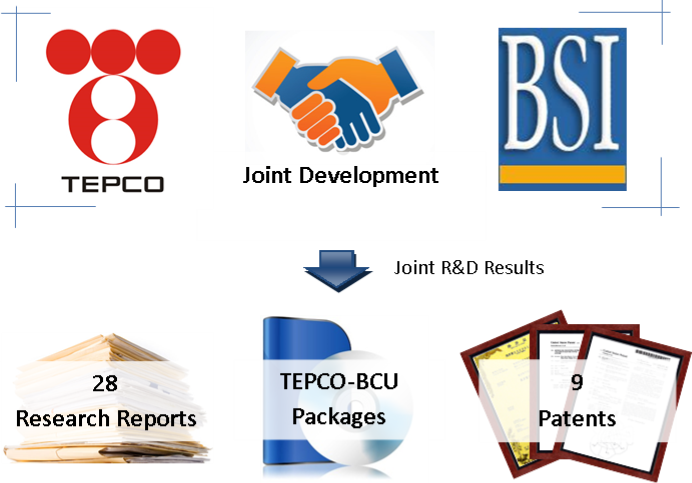
Key Functions
Real-time transient stability assessment for large contingency lists
Insecure and critical contingencies identification
On-line transfer capability calculation based on transient stability constraints
Providing available transfer capability (ATC) at specific interfaces and the corresponding limiting contingency
Providing transient stability margin as operating margin for each critical contingencies
Performing time domain simulation for user-specified contingencies
Key Features
Contingency types include both three-phase fault with primary clearance and single-line-to-ground fault with backup clearance
Categorize insecure and critical contingencies with details such as fault type, fault location and circuit lost
Parallel design for real time application with the implementation of distributed parallel computing platform
EMS integration capability

Key Benefits
Improve situational awareness
Save manpower in stability analysis
Reduce operating margin of a factor of 10 or more
Enable accurate utilization of the transmission capability
Load system to accurate / maximum throughput
Support the dispatch of remote cheap generators
Support renewable energy transmission
Allow more energy trading
Multiple Modes
TEPCO-BCU/RT: Real-Time Mode
TEPCO-BCU/LA: Look-Ahead Mode
TEPCO-BCU/STUDY: Study Mode
TEPCO-BCU/DA: Day Ahead Mode
TEPCO-BCU/STUC: Short Term Unit Commitment Mode
TEPCO-BCU/RE: Renewable Mode
VSA
VSA(On-line Voltage Stability Assessment) is an integrated computer package developed by BSI for voltage security assessment in real-time mode or on-line study mode.
This tool, which is designed for large-scale interconnected power systems in the FERC's open-access transmission, has been successfully evaluated on several power systems ranging from 2,000 buses to 15,000 buses. The integrated package provides the following analysis and control functions with respect to voltage collapse:
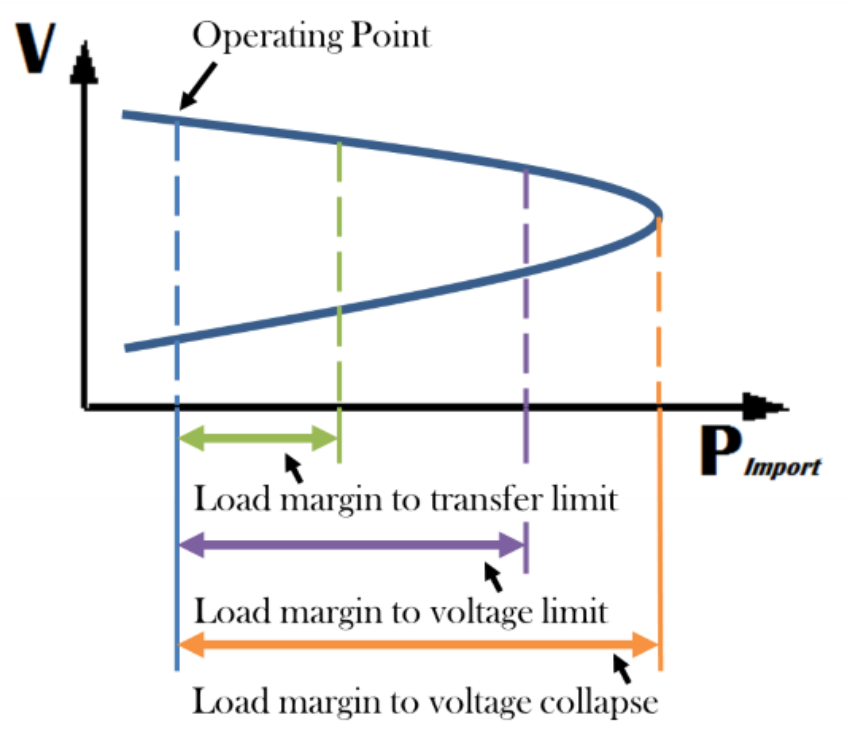
Key Functions
Contingency screening and ranking of a large set of credible contingencies in terms of load margins to voltage instability
Identification of severe contingencies with zero or negative load margins
Computation of exact voltage security load margin of a specified contingency list
Compute the exact load margin to voltage collapse for the base case and each top-ranked contingency
Key Features
Support of large contingency list for on-line analysis
Handling significant penetration of volatile renewable energy
Highly secure, critically secure and insecure contingency classification
Exact voltage security load margins for base case and top-ranked contingencies
Multiple Modes
VSE/RT: Real-Time Mode
VSE/LA: Look-Ahead Mode
VSE/STUDY: Study Mode
VSE/DA: Day Ahead Mode
VSE/STUC: Short Term Unit Commitment Mode
VSE/RE: Renewable Mode
BSI ControlSuite
With our SecureSuite, network operators and planners can assess the system performance in terms of stability and security. But with our ControlSuite, they will be able to take actions or adjustments with system-supplied preventive/enhancement control actions.
TEPCO-BCU Enhancement module explores the unique information of system transient stability and design effective preventive/enhancement controls guaranteeing system stability.
VSE module determines effective enhancement controls to increase the load margin by exercising all the no-cost and low-cost controls before resorting to load shedding.
TEPCO-BCU Enhancement
The TEPCO-BCU Enhancement package provides on-line transient stability preventive control with TEPCO-BCU-Preventive module, and enhancement/emergency control with TEPCO-BCU-Control module.

Key Functions
Preventive control for insecure contingencies
Enhancement control for critical contingencies
Minimum-number control
Minimum-cost control
Key Features
Support various control devices: generators, capacitors, transformers, etc.
Support minimum-number and minimum-cost control preferences
Parallel design for real time application with the implementation of distributed parallel computing platform
EMS integration capability
Key Benefits
Save time and manpower in dealing with the insecure and critical contingencies
Guarantee power network security
Improve system reliability
VSE
The VSE (On-line Voltage Stability Enhancement) module provides enhancement control, preventive control and load margin and sensitivity calculations with respect to voltage collapse.
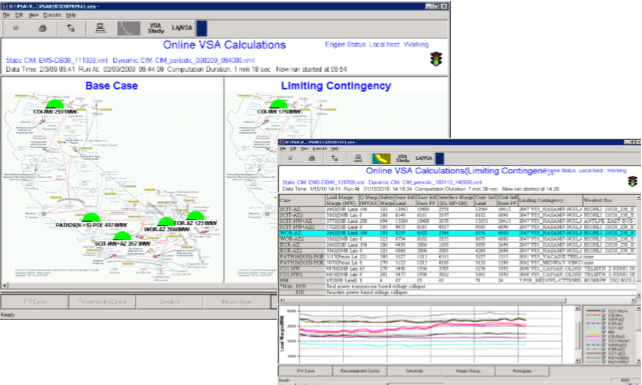
Preventive Control
The Preventive Control Table shows the output of Preventive Control processing by VSA&E. The 5 recommended control actions shown when taken will mitigate all 4 insecure contingencies identified by the Contingency Ranking Analysis. The load margins of the 4 insecure contingencies, which are zero or negative before the preventive control, are all raised such that the load margin of all 4 contingencies are increased to the range from 424 MW to 2832 MW after the preventive control is applied.
Given these existing paragraphs for Preventive Control and Enhancement Control these two additional images are needed.
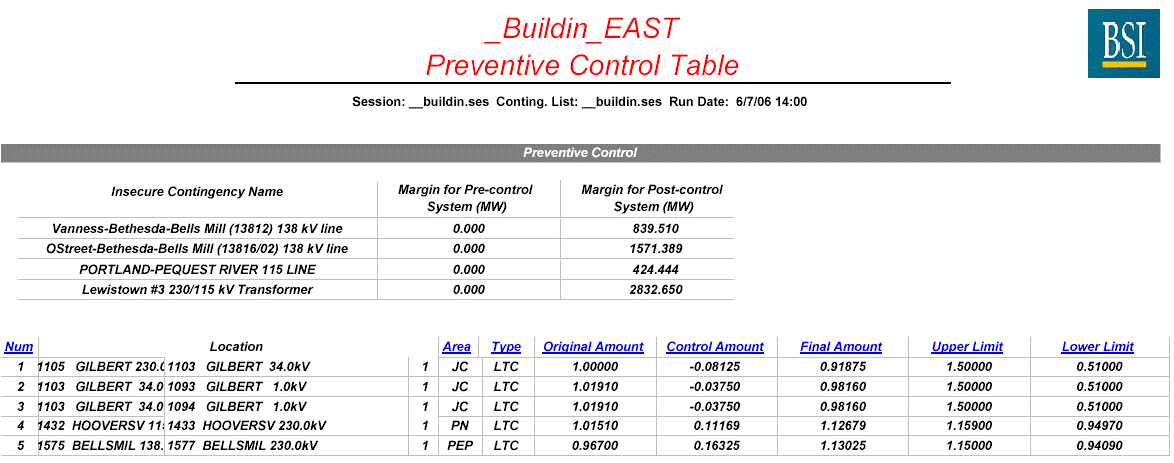
Enhancement Control
Using the same set of available controls as the preventive control, the enhancement control of VSA&E allows the operator to specify a desired (target) amount in MW of increase in load margin for a contingency or the base case. Enhancement control returns a priority-based, minimum set of control actions to execute the desired load margin increase. The output table shows that by executing the 4 recommended control actions the load margin is enhanced by 207 MW increasing the margin from 2710 MW to 2917 MW.
Given these existing paragraphs for Preventive Control and Enhancement Control these two additional images are needed.
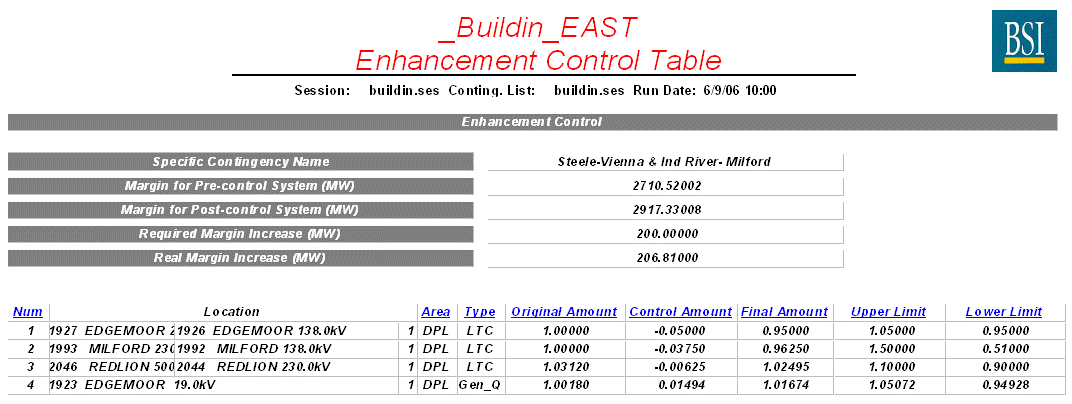
2-Level Control
Level-1 Control: Reactive power compensating devices; ULTC; Phase-shifters; Real Power Generations; Generator terminal voltage.
Level-2 Control: Load shedding - load shedding by location and amount
Improve system reliability
O-Margin
Load-margin-V/A: On-line Operating Margin to Voltage Limit/Real-Time
Load-margin-T/A: On-line Operating Margin to Thermal Limit/Real-Time
Load-margin-S/A: On-line Operating Margin to Steady-State Limit/Real-Time
Modes: Look-Ahead / On-line Study / day-ahead / RE
O-Margin-Enhance
Load-margin-V/E: On-line Operating Margin Enhancement to Voltage Limit/Real-Time
Load-margin-T/E: On-line Operating Margin Enhancement to Thermal Limit/Real-Time
Load-margin-S/E: On-line Operating Margin Enhancement to Steady-State Limit/Real-Time
Modes: Look-Ahead / On-line Study / day-ahead / RE








